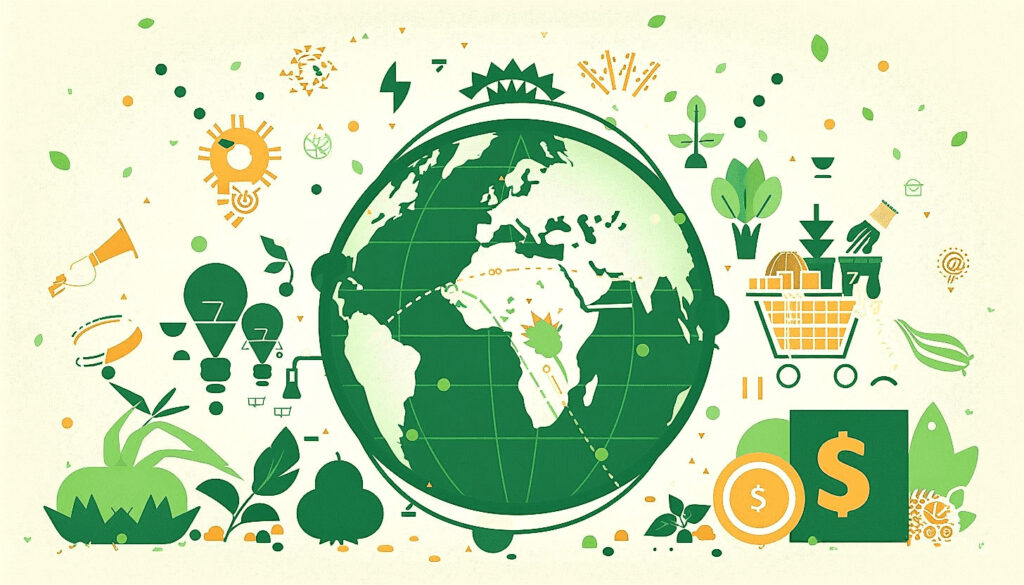Understanding global produce prices requires delving deep into numerous factors.
Economic elements, climate change, political situations, and geographic location play crucial roles.
The interconnected global market impacts these prices significantly.
From farmers to consumers, these factors shape the global agricultural industry.
This article explores these factors, demystifying the currency of our food supply.
One must keep in mind that with constant changes and complexities, these influences remain subject to constant change.
- Weather conditions and natural disasters significantly affect produce prices globally.
- Global supply and demand levels directly influence the cost of vegetables and fruits.
- Transportation and fuel costs are crucial factors in determining produce prices.
- Currency exchange rates can have profound impacts on international produce markets.
- Government policies on agriculture play a pivotal role in setting produce prices.
Moving forward, we’ll be expanding on these factors in much more detail.
I’ll be giving you an in-depth look at how weather conditions and natural disasters impact produce prices worldwide. From there, we will also scrutinize the complexities of international supply and demand.
We’ll discuss why fuel and transport costs matter so much and how currency exchange rates alter the field. Lastly, the effect of government policies on agriculture and the significant role they play in price determination will also be explored.
This information will give you a more complete understanding of the global produce market and the varied elements that influence pricing. The upcoming sections hold valuable insights. Let me tell you, keep reading to gain a broader perspective on the subject matter.
Contents
- Factors Influencing Produce Prices Globally
- 1. Weather Conditions and Natural Disasters
- 2. Global Supply and Demand Levels
- 3. Transportation and Fuel Costs
- 4. Currency Exchange Rates
- 5. Government Agricultural Policies
- 6. Quality and Yield of Harvests
- 7. Agricultural Technology Advancements
- 8. Labor Cost and Worker’s Rights
- 9. Trade Tariffs and Restrictions
- 10. Availability of Suitable Farmland
- The Bottom Line
Factors Influencing Produce Prices Globally
1. Weather Conditions and Natural Disasters
In Short: Weather conditions strongly impact global produce prices by influencing crop growth, with fluctuations in weather patterns potentially leading to reduced supply and inflation. Natural disasters, such as hurricanes and earthquakes, can disrupt agriculture operations, destroy farmlands and significantly raise produce prices.
Weather conditions are a important component influencing the global prices of produce.
The power and pattern of the weather, indeed, have a direct connection with the growth of crops.
Specific climate conditions are essential for the healthy growth and cultivation of various plants and vegetables.
Fluctuations in weather patterns can severely affect the yield and quality of produce, leading to inflation of prices on a global scale.
Unpredictable weather conditions such as storms, frost, drought, and extreme heat can damage crops significantly, reducing the overall supply.
This reduction in supply can lead to a rise in prices as the demand for certain products remains stable or increases.
Let’s look more deeply into few common natural conditions impacting crop growth:
- Floods often lead to a dramatic decline in the availability of certain crops, directly influencing the price.
- Similarly, extreme heat or drought can lead to a decrease in yields, affecting the price of produce.
- Unexpected frost could damage the crops that are sensitive to cold, thereby reducing the yield and increasing the price.
Additionally, global warming and climate change present new shifts in weather patterns influencing the agriculture industry.
Natural disasters, such as hurricanes, earthquakes, and volcanic eruptions, can also play a noteworthy role in driving up produce prices.
Sudden disasters can destroy farmlands, create logistical challenges, and disrupt the normal flow of agriculture operations.
Once again, a sharp reduction in the availability of crops can trigger a sharp rise in price.
It’s not only the direct impact on harvests that matter.
The persisting after-effects of such disasters also take a toll on the production of crops, further escalating produce prices.
The reconstruction of farmlands and restoring normal agricultural activities can also cause a temporary spike in the price of produce due to challenges in production.
The impact of these natural disasters on agriculture and global produce prices is quite profound and typically underestimated.
The reality is, our global food system depends greatly on the harmony and predictability of nature – factors which are currently bearing the brunt of major climatic changes.
Undeniably, weather conditions and natural disasters are significant factors in determining the global price variances for produce.
2. Global Supply and Demand Levels
In Short: Global produce prices are impacted significantly by the principle of supply and demand, influenced by factors such as climatic conditions, market preferences, and population growth. Understanding these dynamics is crucial for agricultural firms, policymakers, and consumers to make informed decisions.
One of the most crucial drivers in setting global produce prices is the level of global supply and demand.
This fundamental law of economics is impacting prices in all sectors, including agriculture.
The principle of supply and demand states that when the supply of a product exceeds its demand, the price tends to drop.
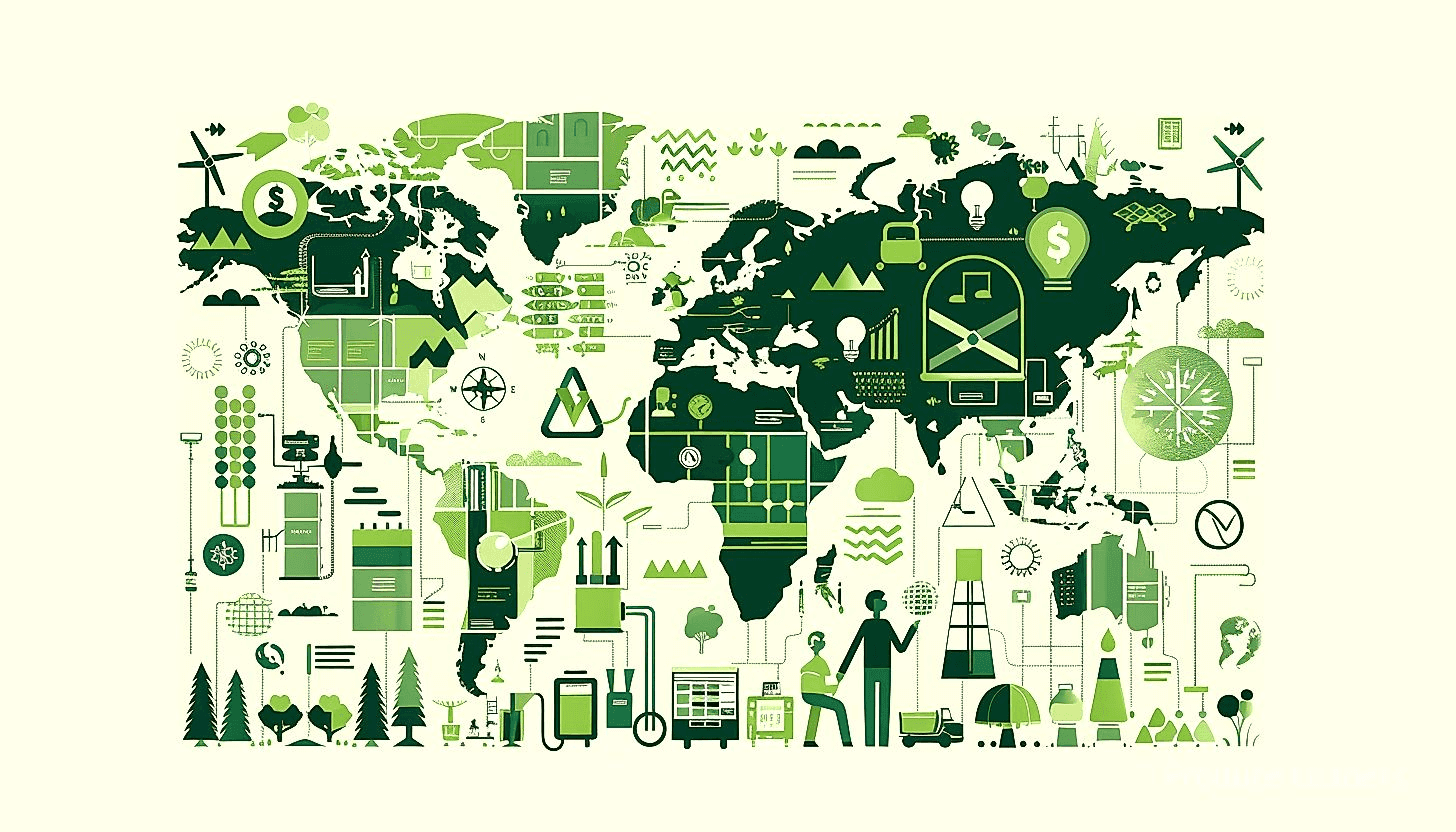
Conversely, if the demand for a good surpasses the available supply, the price tends to increase.
This fluctuation in prices can be easily seen in the produce market, where the availability of fruits, vegetables, and other agricultural products varies with seasons, harvest quality, and several other factors.
However, the global supply and demand trends can be impacted by various elements.
Let’s examine some of the key factors impacting these trends:
- Climatic conditions: Crops are heavily dependent on the weather, and unfavorable climate conditions can significantly impact the yield, affecting the global supply.
- Market preferences: Consumer preferences also play a significant role in demand. As healthy, organic goods experience a surge in popularity, the demand for them increases, thus affecting prices.
- Population growth and income levels: Rapid population growth and rising income levels, particularly in developing countries, can lead to increased demand for a variety of goods, exerting upward pressure on prices.
The interplay of global supply and demand levels creates a complex and dynamic environment that produce marketers must navigate.
It is worth noting that produce prices are directly impacted not only by the overall volume of production but also by regional and seasonal variations.
For instance, a major crop failure in a key production area can cause global prices to rise due to reduced supply, even if other regions have healthy yields.
The dynamics of international trade also impact supply and demand.
If a major consumer of a particular commodity restricts their imports, it can cause a surplus in global supply, leading to a drop in prices.
Similarly, restrictions on exports can trigger a shortage, causing prices to rise.
Understanding these global supply and demand trends is important for agricultural firms, policymakers, and consumers, who must navigate this complex landscape to make informed decisions.
3. Transportation and Fuel Costs
In Short: Transportation and fuel costs significantly influence global produce prices, with high fuel prices increasing expenses for farmers and suppliers, ultimately elevating the cost of produce. The type of transportation, the refrigeration necessity, and political stability in oil-producing countries are key considerations in understanding the impact of these costs, which can affect both the price and availability of goods.
There’s no denying the substantial role that transportation and fuel costs play in determining global produce prices.
It is quite intuitive; the transporting of goods from one place to another, particularly over long distances, necessitates a substantial amount of fuel, contributing directly to the cost of the product.
High fuel prices can significantly increase the expenditure for farmers and suppliers, consequently driving up the price of the produce in markets around the world.
It’s worth noting that rising fuel costs do not affect all producers equally: they pose a much greater challenge for those located at a greater distance from their market destination.
These transportation and fuel costs form one of the key elements that influence the global trade and pricing of produce, and they fluctuate persistently, impacted by various political, economic, and environmental factors.
While they are variables that are largely out of the control of individual farmers or suppliers, they are a reality that exists in the international marketplace.
Recognizing their implications allows us to understand the complexities and vulnerabilities that are deeply woven into the fabric of global food systems.
Understanding the impact of transportation and fuel costs on produce prices entails considering a few key points:
- The type of transportation used— whether by road, railways, shipping, or air— plays a significant role in determining the cost.
- The fuel demanding nature of the refrigeration required in transporting fresh produce is another heavy factor.
- Political stability, particularly in oil-producing nations, can majorly upset fuel prices, followingly affecting transportation costs.
In cases where fuel prices skyrocket due to unstable international relations or trade conflicts, the effects reverberate down the line to consumers who are often hit with higher prices for fresh produce.
Bear in mind too that the impact of rising transportation and fuel costs doesn’t just stop at pricing; it also affects the availability of goods.
Increased costs can be a deterrent to transporting food over long distances, resulting in decreased availability of certain types of fruits and vegetables, particularly those that are not grown locally.
Despite these challenges, many in agriculture are exploring innovative approaches to mitigate the effect of transportation and fuel costs.
From optimizing logistics and supply chains to shifting growing locations closer to dense consumer markets, these measures aim to create a sustainable and economically competitive global food system, capable of ensuring food security and reducing the impacts on global produce prices.
As we continue to grapple with the undeniable reality of rising fuel prices and the implications for global produce prices, understanding these factors provides us with a glimpse into the complex dynamics at play and the necessary steps to take in creating a more resilient food system.
4. Currency Exchange Rates
In Short: Currency exchange rates have a major direct and indirect impact on agriculture markets, affecting both the cost of imports and exports and the price of produce globally. These currency fluctuations impact agricultural sector investment, interest rates, and the cost of production inputs, underscoring the interconnected nature of global food systems.
The shape of the world economy and currencies influence the agricultural market drastically. Currencies exchange rates can be volatile, causing price fluctuations in the produce market.
This volatility can impact the cost of imports and exports globally.
A stronger U.S. Dollar, for instance, makes American agricultural exports more expensive on global markets, potentially suppressing demand for them.

Conversely, a weaker U.S. Dollar could make those same goods cheaper and stimulate demand.
In other words, when a country’s currency is strong, it can purchase more of another country’s goods, leading to more exports from that country and potentially higher prices of produce in the global market.
In addition to the direct impact, currency exchange rates also affect produce prices indirectly through the cost of inputs.
For instance, when the currency of a country that exports fertilizers depreciates against the currency of a country it trades with, the cost of these inputs falls in the importing country, thus affecting the overall produce prices.
The following list illustrates how both these direct and indirect impact manifest:
- Direct impact: A stronger currency can buy more foreign produce, making it cheaper domestically and potentially more expensive globally. Conversely, a weaker currency can make domestic produce more expensive and foreign produce cheaper.
- Indirect impact: A change in currency value can affect the cost of agricultural inputs, like fertilizers and machinery. This cost fluctuation affects the cost of production, which in turn, influences the price of produce.
Moreover, currency exchange rates impact investor sentiment, affecting investment in the agricultural sector and contributing to price volatility.
Currency values also play a role in determining a country’s interest rates, further complicating the picture for produce prices.
Higher interest rates can discourage investments in the agricultural sector leading to lower production and hence, higher produce prices.
It is also important to note that the frequency and scale of exchange rate fluctuations can significantly influence the predictability and stability of produce prices.
While a currency’s value can fluctuate dramatically in a short time, longer-term trends are generally more essential to consider in agriculture.
As a result of these complex relationships, understanding currency exchange rates and how they influence produce prices is critical for both individuals and businesses involved in the agriculture sector.
Currency complications are also a reminder that the world’s food systems are interconnected, and shifts in one region can have global impacts.
Understanding these dynamics, in turn, can help farmers, businesses, policymakers, and consumers to navigate continually changing produce markets more effectively.
5. Government Agricultural Policies
In Short: Government agricultural policies, through subsidies and fostering innovation, greatly influence global produce prices and could either benefit or harm farmers. However, these policies may also create volatility in agricultural markets and can impact produce prices by hindering innovation, creating regulatory burdens, and changing with each government.
It is essential to acknowledge the immensely significant role that Government Agricultural Policies play in the fluctuation of produce prices globally.
These policies are a double-edged sword as they can either exacerbate or alleviate the issues faced by farmers, thereby indirectly influencing the cost of agricultural produce.
One critical aspect of these policies includes the subsidies offered by many governments to their domestic agricultural sector.
Such subsidies can lower production costs for farmers, hence enabling the pricing of the produce to be more competitive on the international market.
This, in turn, can result in reduced prices for certain food items.
While subsidies may sound advantageous, they also can create a rather skewed global trade environment.
This is due to the fact that farmers in richer nations might receive more significant subsidies, thus allowing them to sell their produce at artificially low prices, in part exacerbating the plight of farmers in developing nations.
These circumstances underscore the profound influence that government agricultural policies have on global produce prices.
Another critical aspect of government agricultural policies lies in their ability to foster or impede agricultural innovation and development.
This is essentially a list of ways in which policies can boost innovation:
- By providing financial support and incentives for research and development in the agricultural sector
- By ensuring the protection of intellectual property rights to encourage invention and new technology adoption
- By facilitating access to credit for smallholder farmers which enables them to invest in more efficient farming methods.
However, it should be noted that not all government policies facilitate growth and innovation in agriculture.
For instance, certain policies may restrict the use of genetically modified organisms (GMOs), which could diminish productivity and thereby increase crop prices.
Similarly, some policies could create onerous regulatory burdens for farmers, leading to enhanced operational costs which are often reflected in the final price of the produce.
Thus, the nature and implementation of government agricultural policies can drastically affect the cost of food internationally, illustrating their significant role in influencing global produce prices.
Further, changes in government can also lead to fluctuations in agricultural policies, causing instability in the marketplace and impacting global produce prices.
In such cases, agricultural traders and exporters need to constantly stay abreast of any changes in these policies for them to make informed business decisions.
This uncertainty can lead to price volatility, thereby affecting the global price of produce.
It is hence clear that government agricultural policies are an essential determinant of the fluctuations we observe in the global prices of agricultural produce.
While these policies can at times be beneficial, they can also at times cause harm, underscoring the intricacies inherent in the global agricultural system.
6. Quality and Yield of Harvests
In Short: Quality and yield considerably influence global produce prices, with quality referring to crop characteristics and yield relating to the quantity per land unit. The balancing of high-quality crops and high yield is essential in stabilizing global produce prices and promoting efficient and sustainable farming practices.
When examining produce prices on a global scale, we must consider the quality and yield of harvests as major influencing factors.
Quality and yield of a crop have a close relationship with the market price of that crop.
The quality of a given crop is heavily dependent upon various harvest-related conditions such as weather, soil quality, and pest management.
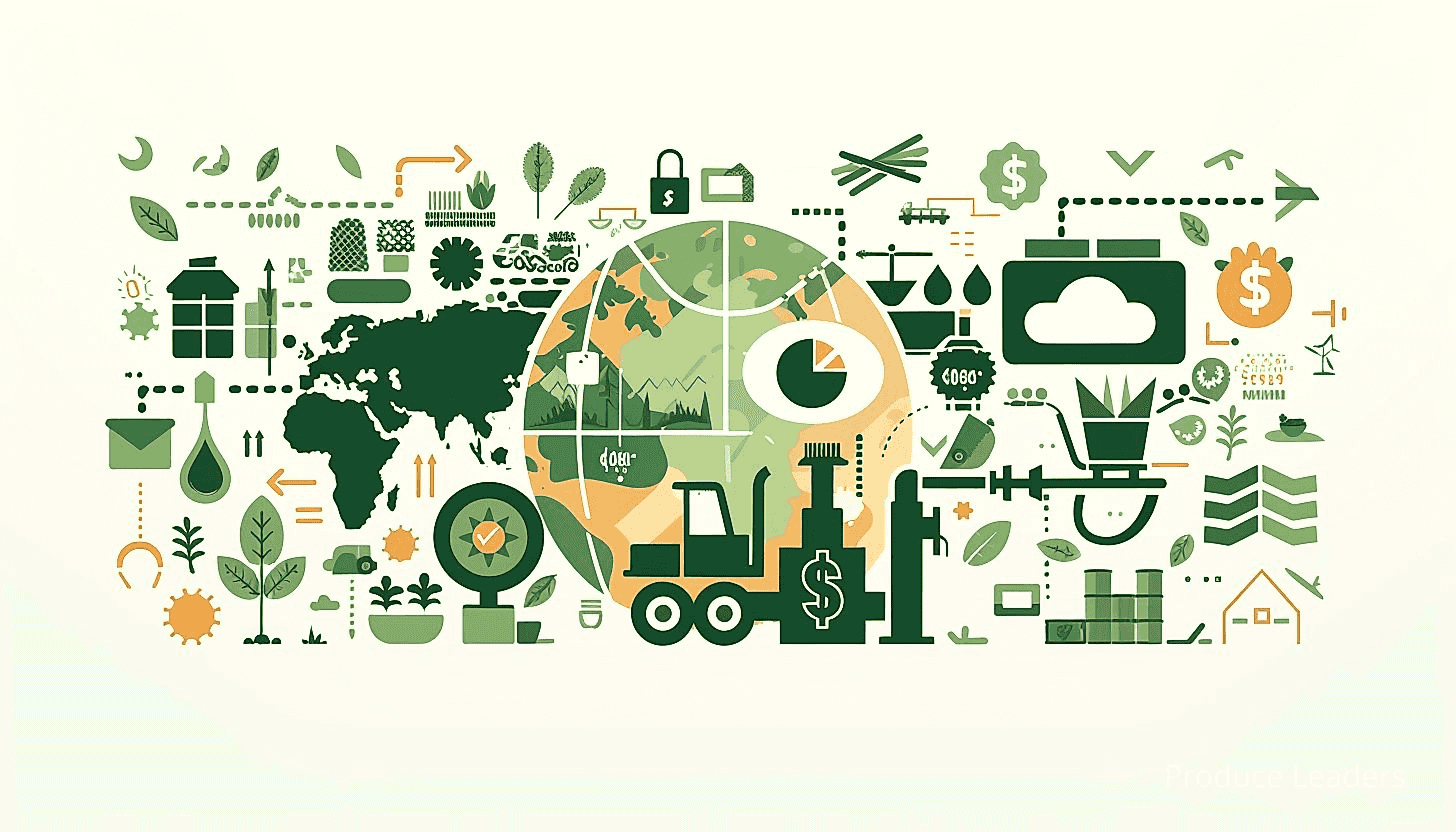
High-quality crops, which are typically characterized by attributes like size, color and flavor, command higher prices in the market.
The yield of a crop, which refers to the number of units produced per unit of land, has a powerful impact on market pricing due to its direct link to supply.
When the yield is high, the supply of a crop increases, which can potentially drive down prices due to surplus.
On the other hand, a lower crop yield decreases supply, often leading to upward pressure on prices.
Additionally, the influence of quality and yield on produce prices becomes more pronounced when we consider how global trade and consumer preferences are impacted by these factors.
Here are a few ways in which quality and yield impacts the pricing of produce:
- High-quality produce enjoys greater demand, primarily because consumers are willing to pay more for better texture, taste and freshness.
- A reduced yield can result in a supply shortage, pushing up the price of the produce as a consequence of the ‘law of supply and demand’.
- In the case of an exceptional crop yield, prices may be forced down due to an oversupply in the market, potentially leading to situations of extreme price volatility.
- The yield and quality of a harvest also has much to do with seasonal changes, which can significantly affect global produce prices due to shifts in export and import dynamics.
The attention to crop quality and yield size in influencing global produce prices underlines the fact that agriculture is a complex business.
This complexity is only compounded when we consider the effects of quality and yield on global market dynamics, trade policies, and consumer behavior.
However, it is this very relationship between the quality and yield of harvests and global produce prices that underscores the critical role of efficient and sustainable farming practices.
In the end, the challenge lies in balancing a critical need for high yields with the equal importance of maintaining superior quality, ensuring that global produce prices are stable and fair for all participants in the chain – from farmers to consumers.
7. Agricultural Technology Advancements
In Short: Advanced agriculture technology like precision farming tools, automated systems, and genetically modified crops can significantly reduce production costs and increase yields, thereby lowering prices for consumers. However, not all tech advancements lead to price reduction due to high development costs, strict government regulations, and potential disruption to traditional farming practices.
The introduction of advanced technology in agriculture is a significant driver for change in produce prices around the world.
This technology, including precision farming tools, automated harvesting systems, and genetically modified crops, can drastically reduce the cost of production and increase yield, both of which can lead to decreased prices for consumers.
For instance, the use of agricultural drones has been a significant technological advancement in recent years.
Drones can carry out a variety of tasks, from monitoring crop health to assisting in the application of fertilizers and pesticides.
Their use allows farmers to optimise the use of resources, therefore reducing cost and followingly, prices.
Moving forward, let us take a look at some specific examples of how agricultural technology advancements have been able to influence produce prices.
- Precision agriculture: It uses technology to measure key field conditions, from moisture content to nutrient levels. This data can then influence decisions about when, where, and how much water, fertiliser, and pesticide to apply, thus increasing efficiency and lowering cost.
- Automated systems: Robotic harvesters and self-driving tractors, for instance, can operate continuously, thus accelerating the production process and reducing density of labour, potentially decreasing costs.
- Genetically modified crops: They can be tailored specifically to be more resistant to pests, have a greater nutritional content or be more adaptable to adverse weather conditions, thus increasing the yield and reducing losses, which can favourably impact prices.
The notable thing to remember here is that not all technological advancements necessarily lead to a reduction in prices.
Some may raise the cost of production, thereby increasing prices, particularly if the technology is expensive to develop, purchase, or maintain.
Additionally, government policies and regulations surrounding the use of new technologies can also influence their impact on prices.
For instance, if stringent regulations are applied to genetically modified crops, it could result in higher costs and consequently, higher product prices.
Moreover, advancements in agricultural technology can have profound socio-economic effects on farming communities, particularly in developing countries.
While they can potentially decrease the cost of production and result in cheaper produce, they may also disrupt traditional farming practices and livelihoods.
In this context, it is important to consider the holistic implications of technological advancements in agriculture, not just the immediate impact on produce prices.
Conclusively, agricultural technology advancements represent a dynamic and complex factor influencing global produce prices, with potentially significant implications for producers and consumers alike.
Therefore, it is essential to monitor and evaluate the evolution of these technologies and their effects on the global market to understand their role in shaping the cost of our food.
8. Labor Cost and Worker’s Rights
In Short: Labor costs and workers’ rights greatly influence global produce prices, with variations in these factors across regions impacting the cost of agricultural goods. Worker protections and rights including safe conditions, fair wages, and healthcare can increase production costs, but unethical labor practices in nations with fewer protections carry hidden social costs, influencing the trend towards more ethically produced goods.
The importance of labor costs and workers’ rights in influencing global produce prices cannot be understated.
One significant component of the cost of producing agricultural goods is the expense associated with labor.
This includes not only the wages paid to farm workers but also costs related to their healthcare, housing, and other benefits.
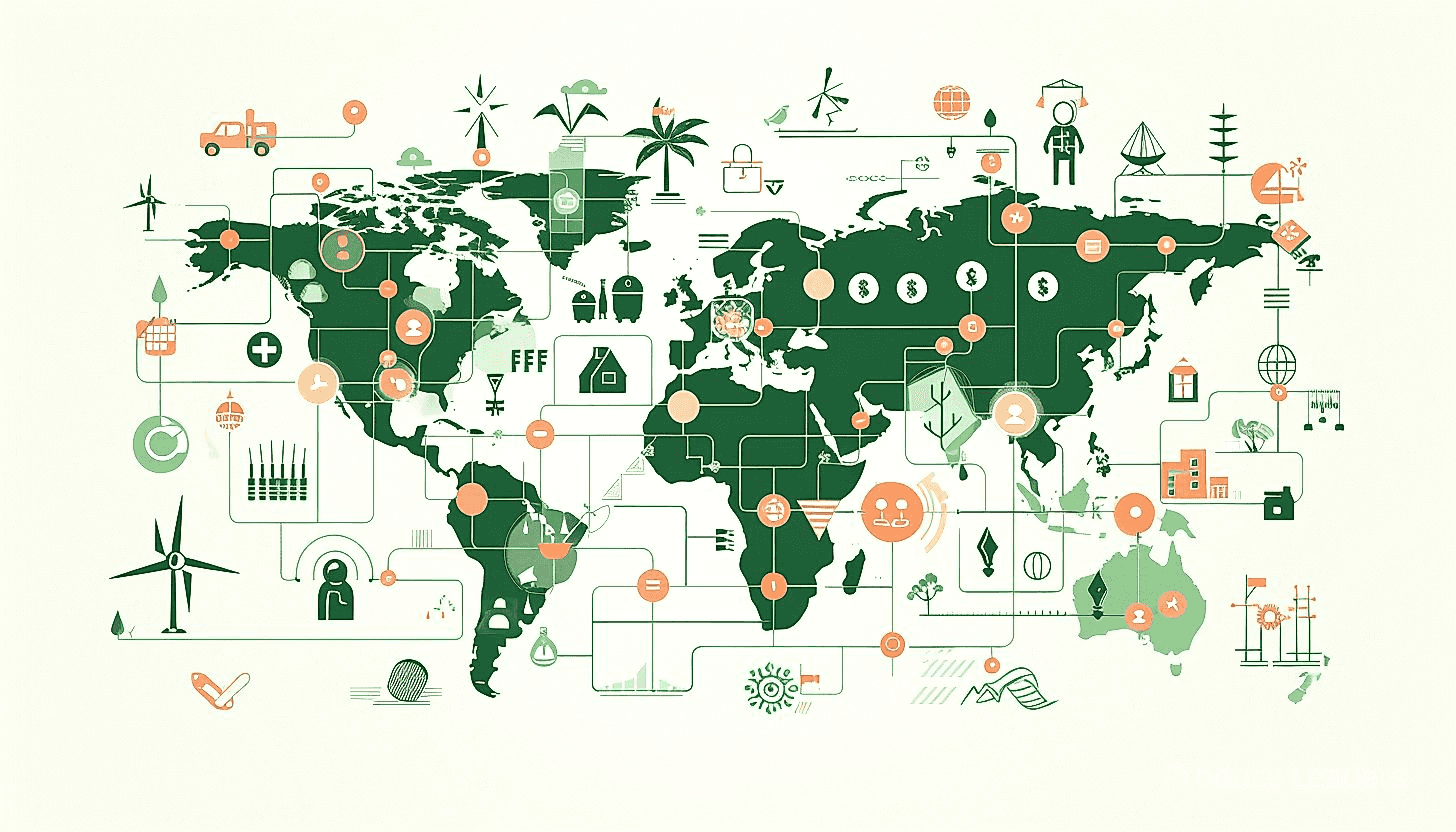
Within this framework, it is worth noting that these labor costs can vary dramatically from one region to another.
For instance, agricultural labor in developed Western countries usually costs significantly more than in developing nations.
Such discrepancies can greatly impact global produce prices, as goods grown in regions with lower labor costs can often be sold more cheaply on the international market.
However, it’s not just labor costs that impact prices – worker’s rights play a crucial part too.
There’s a relationship between the level of protection for agricultural workers’ rights and the cost of produce.
Countries with strong worker protections typically see higher production costs, which can be passed on to consumers in the form of higher prices.
Let’s explore some key areas in which workers’ rights can include:
- Safe working conditions – Improving the safety of agricultural work can require investments in training and equipment, which will increase costs.
- Fair wages – Ensuring workers are paid a fair wage for their labor can raise the cost of production.
- Access to healthcare – If farmers are required to provide healthcare for their workers this also increases costs.
Contrarily, in countries with fewer protections and rights for agricultural workers, we often find lower production costs.
Regrettably, this can sometimes be at the expense of worker’s welfare and can lead to unethical labor practices.
While these conditions may result in cheaper produce for consumers, they could potentially carry hidden social costs.
Consumers and retailers increasingly value ethical production, and a trend towards fair-trade labeling is evidence of this.
In response, some producers are choosing to invest in worker’s rights and sustainable farming practices, which can raise their costs but also allow them to reach a growing market of ethically-minded consumers.
In summary, labor costs and workers’ rights have a significant impact on global produce prices.
These factors can alter the balance between cost of production and price, either increasing or decreasing the overall cost to the consumer.
Therefore understanding these factors is essential when discussing the factors influencing global produce prices.
9. Trade Tariffs and Restrictions
In Short: Trade tariffs and restrictions significantly impact global produce prices, often used as political tools by nations to manage trade relations. These measures can escalate final prices for consumers, create deficits or surpluses, and cause international tension, with varying effects on local and international markets.
One factor that enormously influences produce prices on a global scale is trade tariffs and restrictions.
These tariffs and restrictions are often used by nations as a political tool to balance trade relations with other countries.
The imposition of high tariffs leads to an increase in the cost of imported goods, including agricultural outputs.
This surge in costs is then passed onto the consumers, escalating the final produce prices.
On the groove of economic sanctions, countries may also impose trade restrictions or embargos on specific goods and products from certain countries.
Such actions may result in a deficit of available produce in the global market, which followingly elevates the prices.
It is crucial to understand the dynamics of international trade to hone in on how these tariffs influence market prices.
To organize this understanding, here is a list of key aspects:
- Import duties: High import taxes on agricultural goods increase the cost of such imports, which is eventually burdened on the consumers.
- Export subsidies: Countries may subsidize the exports of their own agricultural goods, encouraging local production which can lead to a global surplus and lower prices.
- Trade embargos: An embargo or trade ban can severely limit the availability of certain goods, causing a surge in prices due to scarcity.
Furthermore, tariffs and restrictions can also discourage international trade, favoring local producers over foreign competitors.
This can create a local surplus of goods, which might potentially lower the produce prices domestically, but increases them internationally.
Depending on the severity of the tariff, it can also lead to escalating tension and potential trade wars between countries.
It’s important to acknowledge that different scales of impact are felt across the globe, influencing both local and international markets differently.
Developing nations, for instance, often rely on their agricultural exports.
Any imposed tariffs or restrictions can massively impact the prices of their exported goods, potentially leading to an economic crisis.
Moreover, the negotiation of new trade deals and agreements after sudden political shifts, such as Brexit, can bring uncertainty to the market and volatility to agricultural prices.
At the end of the day, addressing the impacts of trade tariffs and restrictions on produce prices is a complex process that encompasses a fusion of economic principles and political acumen.
10. Availability of Suitable Farmland
In Short: The availability and quality of suitable farmland directly influence global produce prices. Environmental factors, urbanization, land tenure systems, and scarcity of high-quality farmland are major contributors to this global issue.
The availability of suitable farmland stands as a significant influencer of global produce prices.
Variability in the amount and quality of available farmland can greatly influence the cost and quantity of produce that can be cultivated.
Consider, for instance, the impact of soil fertility. Soil fertility is an important determinant of farmland suitability, affecting crop yield and produce quality, hence influencing pricing.
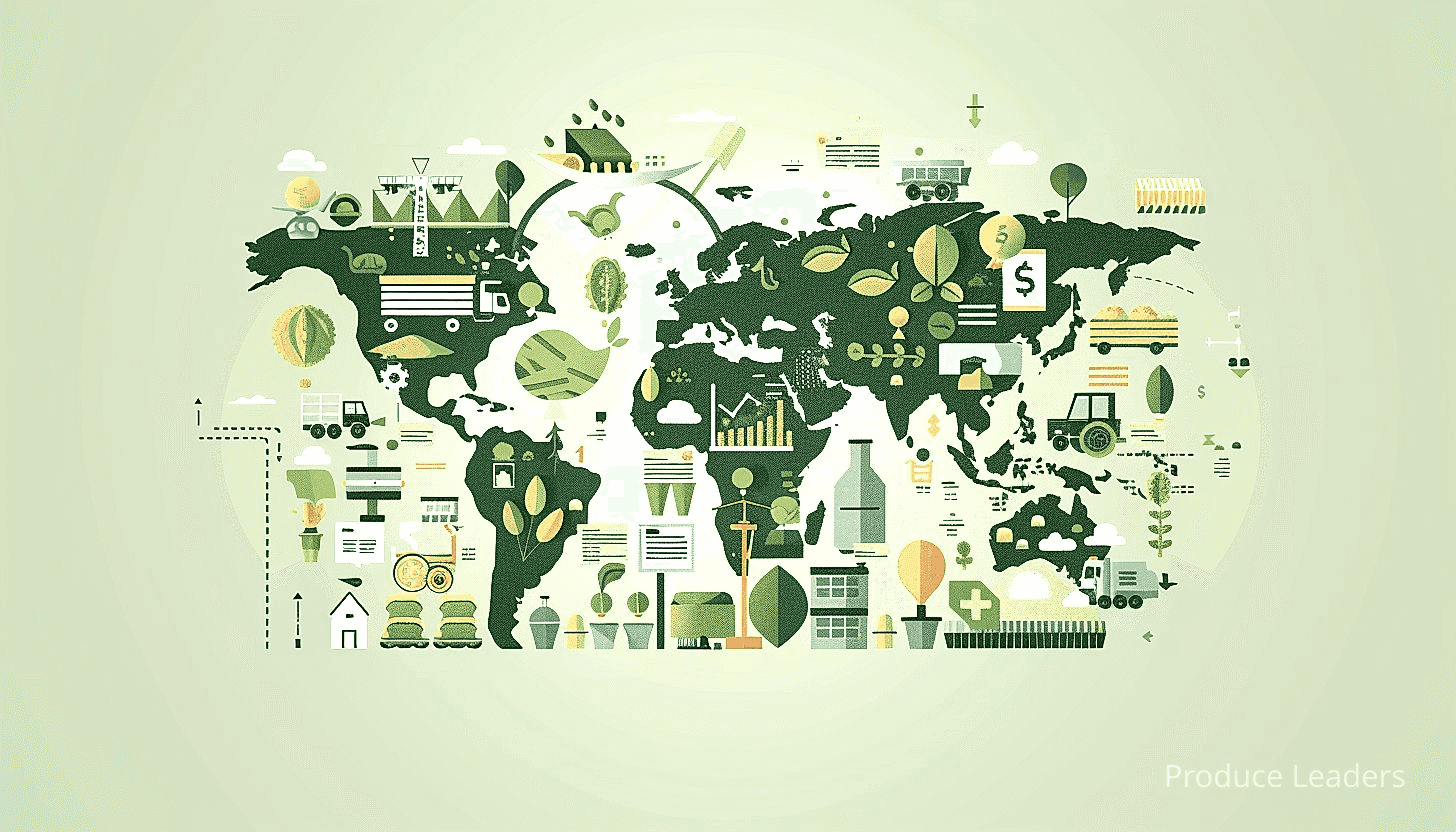
Then, there are issues of deforestation and desertification, which continue to diminish available farmland globally.
Conversely, practices such as agricultural land expansion and reclamation increase the amount of usable farmland.
The following points discuss crucial aspects regarding the availability of suitable farmland:
- Farmland Scarcity: Scarcity of good farmland due to overpopulation or poor land management can massively drive up land prices, pushing up farming costs and followingly, produce prices.
- Environmental Concerns: Climate change, soil erosion, and contamination reduce the fitness of farmland, affecting crop yield and driving up produce prices.
- Land Tenure Systems: In some regions, land tenure issues limit the farmers’ ability to make optimal use of the land, which can in turn impact the quantity and cost of produce.
- Urbanization: Rapidly expanding cities encroach on farmland, constraining available farming space and increasing competition for land, which can cause hikes in produce pricing.
The aforementioned information suggests that the scarcity of high-quality farmland is a real concern across the globe, and it’s significantly affecting global produce prices.
In regions where fertile fields are rare, farmers may resort to using marginal lands with poor soil quality, leading to decreased crop yields and consequently higher produce prices.
Farmlands that were once fertile may be rendered unsuitable for cultivation by environmental degradation or climate change.
The impacts of climate change, such as flooding, drought, and increased incidence of pests and diseases, can significantly reduce the quality and quantity of available farmland.
Furthermore, man-made disasters such as oil spills, industrial waste disposal, and fallout from nuclear accidents can also contaminate land and water resources necessary for farming.
In such scenarios, farmers may have to invest heavily in remediating the contaminated lands or switch to alternative farming sites, which can lead to an increase in the overall cost of farming and followingly higher produce prices.
To mitigate these challenges, investments are made in technology and strategic planning to improve soil fertility, manage water resources, and combat pests and diseases.
These measures, however, also involve costs that are then transferred onto the final produce prices.
Transnational land acquisitions, often termed as ‘land grabbing’, can also affect availability of local farmlands and consequently, influence global produce prices.
As we all know, the availability of suitable farmland is intertwined with many social, economic, and environmental factors, making it a critical element to consider in the discussion of global produce pricing.
The Bottom Line
The pricing of produce on a global scale is a complex matter influenced by a myriad of factors. From volatile weather patterns to changing consumer preferences, the interplay of these elements shape the cost of fruits and vegetables around the world. Policy interventions, infrastructure, and technological advancements also greatly impact prices, influencing the cost of produce from its origin to our dinner plates. Understanding these factors will aid in predicting and potentially controlling future price fluctuations. It is therefore essential for policymakers, farmers, and consumers alike to stay informed and adapt nimbly to these shifts in the global produce market.

